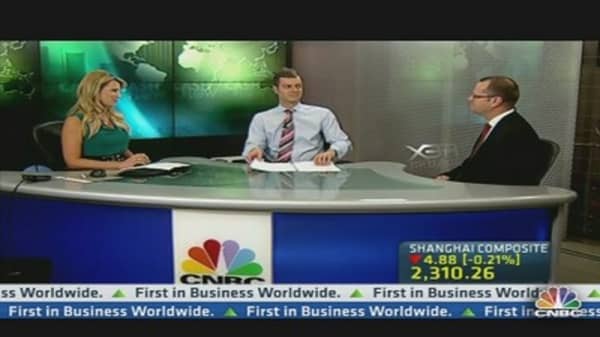"At the margin, today's [Thursday's] figure is likely to increase the prospects of an ongoing easing bias for the RBA. The bank will be looking to ensure that growth in consumption is sufficient to offset declines in capital expenditure and the government sector," added Spooner.
Tony Farnham, economist at Australian stockbroker Paterson, said the capex data could prompt a rate cut as early as March.
"The data give the RBA reason enough to cut rates in March if our banks do not cut mortgage rates independently," he said.
However, Spooner added that he did not expect the RBA to take definitive action until June.
"The RBA would need to see evidence that domestic consumption is not recovering sufficiently before they lower rates again. Either that or there is significant deterioration in the global outlook. On that basis I don't think we would see another rate cut until at least the June quarter," he added.
Australia's economy has been reeling under a strong domestic currency, which has dampened the country's exports and the tourism and mining industries. The Aussie dollar has strengthened close to 6 percent against the greenback since June last year.
(Read More: Swan Snubs Currency War, Says Strong Aussie a Worry)
Investment Peak
Farnham added that the latest data were a pointer to the slowdown in the country's mining sector, where an investment peak is supposed to come earlier than expected.
Australia's miners suffered from both a fall in Chinese demand last year and from a controversial mining tax passed in March 2012 and introduced in July.
"The capex data are important because they provide a key pointer to the extent and timing of the anticipated slowdown in Australia's long-lived mining centric investment surge. And today's [Thursday's] data indicated that this slowdown was coming quicker than previously expected," said Farnham.
CMC's Spooner agreed: "The figures confirm that capital expenditure is likely to be a drag on Australia's growth. Both actual and expected future investment is declining in manufacturing and other non-mining areas. At this stage, they are showing no signs of compensating for the expected peak in mining investment later this year.
(Read More: Australia Mining Tax Will Not Impact Investment: Expert)
However, Gerry Harvey, executive chairman of Australian retailer Harvey Norman, had a more positive outlook following the capex data release.
"If you had asked me a month or six weeks ago, I thought it was pretty much 100 percent that those interest rates were going to drop half a percent to 1 percent in 2013," he said on CNBC Asia's "Cash Flow" on Thursday.
"However, there is enough anecdotal evidence at the moment to suggest maybe there is a little bit of a pick-up [in the economy]...the Reserve Bank may well not decrease rates, but they'll be watching it from month to month," he added.





